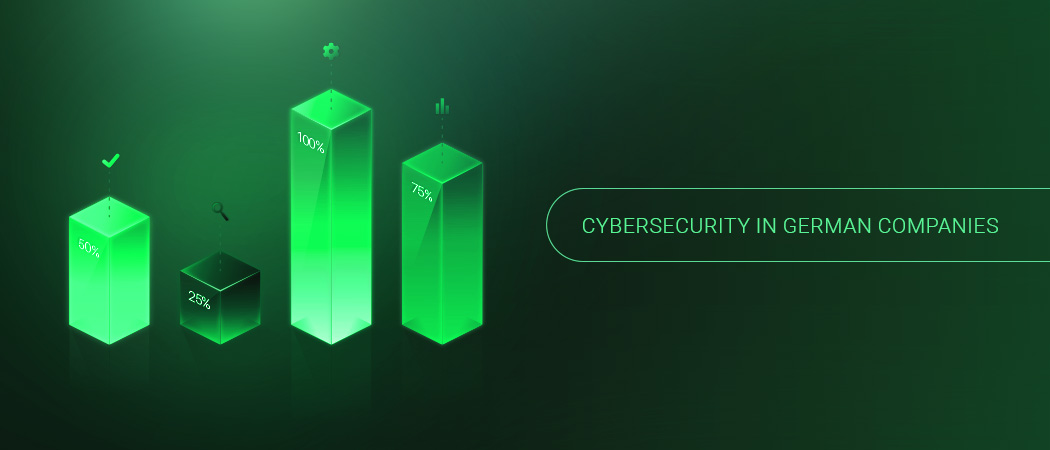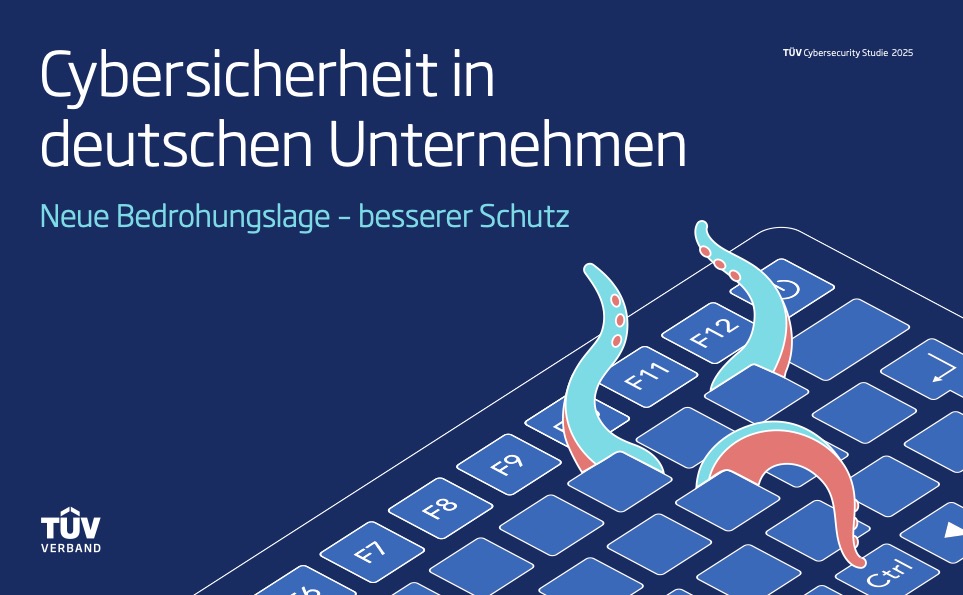Cyber threats are evolving at breakneck speed, but the fundamental weaknesses attackers exploit remain strikingly unchanged. So far in 2025, many analysts have published landscape reviews of 2024 and outlooks for 2025. The cost of cyber breaches is ticking upwards, but overall, cyber breach root-causes have not changed. Phishing [T1566] and exploiting known software vulnerabilities [T1190] continue to top the list. Another key observation is that attackers are weaponizing public information faster, converting CVE (Common Vulnerabilities and Exposures) disclosures into viable exploit code within days or even hours. Once inside a victim’s network, they are executing precision second-stage objectives faster too, deploying ransomware within minutes.

In this month’s edition of the Greenbone Threat Report, we will briefly review the disclosed chats of the Black Basta ransomware group and highlight Greenbone’s coverage of their now exposed techniques. We will also review a report from Greynoise about mass exploitation attacks, a new actively exploited vulnerability in Zimbra Collaboration Suite and new threats to edge networking devices.
The Era of Tectonic Technology
If security crises are like earthquakes, then the global tech ecosystem is the underlying tectonic plates. The global technology ecosystem would be best represented as the Paleozoic Era of geological history. Rapid innovative and competitive market forces are pushing and pulling at the fabric of IT security like the colliding supercontinents of Pangea; continuous earthquakes constantly forcing continental shift.
Entirely new paradigms of computing such as generative AI and quantum computing are creating advantages and risks; volcanoes of value and unstable ground. Global governments and tech giants are wresting for access to citizen’s sensitive personal data, adding gravity. These struggles have significant implications for privacy, security and how society will evolve. Here are some of the major forces destabilizing IT security today:
- Rapidly evolving technologies are driving innovation, forcing technical change.
- Organizations are both forced to change as technologies and standards depreciate and motivated to change to remain competitive.
- Fierce market competition has accelerated product development and release cycles.
- Strategic planned obsolescence has been normalized as a business strategy for reaping financial gain.
- Pervasive lack of accountability for software vendors has led to prioritization of performance over “security-first” design principles.
- Nation-states weaponize technology for Cyber Warfare, Information Warfare and Electronic Warfare.
Due to these forces, well-resourced and well-organized cyber criminals find a virtually unlimited number of security gaps to exploit. The Paleozoic Era lasted 300 million years. Hopefully, we won’t have to wait that long for product vendors to show accountability and employ secure design principles [1][2][3] to prevent so-called “unforgivable” vulnerabilities of negligence [4][5]. The takeaway is that organizations need to develop technical agility and efficient patch management programs. Continuous prioritized vulnerability management is a must.
Black Basta Tactics Revealed: Greenbone Has Coverage
Leaked internal chat logs belonging to Black Basta ransomware group have provided insight into the group’s tactics and inner workings. The logs were leaked by an individual using the alias “ExploitWhispers” who claimed the release was in response to Black Basta’s controversial targeting of Russian banks, allegedly creating internal conflicts within the group. Since its emergence in April 2022, Black Basta has reportedly amassed over $100 million in ransom payments from more than 300 victims worldwide. 62 CVEs referenced in leaked documents reveal the group’s tactics for exploiting known vulnerabilities. Of these 62, Greenbone maintains detection tests for 61, covering 98% of the CVEs.
The Greynoise 2025 Mass Exploitation Report
Mass exploitation attacks are fully automated network attacks against services that are accessible via internet. This month, Greynoise published a comprehensive report summarizing the mass exploitation landscape including the top CVEs attacked by the largest botnets (unique IPs), the most exploited product vendors and top CVEs included in the CISA’s (Cybersecurity and Infrastructure Security Agency) KEV (Known Exploited Vulnerabilities) catalog and exploited by botnets. Greenbone Enterprise Feed has detection tests for 86% of all CVEs (86 total) referenced in the report. When considering only CVEs issued in 2020 or later (66 total), our Enterprise Feed has 90% detection coverage.
Additional findings include:
- 60% of CVEs exploited in mass exploitation attacks were published in 2020 or later.
- Attackers are exploiting vulnerabilities within hours of disclosure.
- 28% of vulnerabilities in CISA KEV are exploited by ransomware threat actors.
Zimbra Collaboration Suite
CVE-2023-34192 (CVSS 9.0) is a high-severity Cross-Site Scripting (XSS) vulnerability in Zimbra Collaboration Suite (ZCS) version 8.8.15. The flaw allows authenticated remote attackers to execute arbitrary code via crafted scripts targeting the `/h/autoSaveDraft` function. CISA added CVE-2023-34192 to its KEV catalog, indicating that it has been actively exploited in real-world attacks. Proof-of-concept (PoC) exploit code is publicly available, allowing low-skilled attackers to join the fray. CVE-2023-34192 has held a very high EPSS since its disclosure in 2023. For defenders leveraging EPSS for remediation prioritization, this indicates a high priority to patch.
Zimbra Collaboration Suite (ZCS) is an open-source office productivity platform that integrates email, calendar, contacts, tasks and collaboration tools but holds a niche market share of less than 1% of all email and messaging platforms.
Living on the Edge: New Critical Networking Device Flaws
In our monthly threat report we have been tracking the persistent threat to edge network devices. Earlier this-month, we reported on a perfect security storm affecting end-of-life (EOL) Zyxel routers and firewalls. In this section we will review new security risks that fall into the “edge networking” category. Greenbone has detection capabilities for all CVEs discussed below.
Chinese Hackers Exploit Palo Alto’s PAN-OS for Ransomware
CVE-2024-0012 (CVSS 9.8), a vulnerability in Palo Alto PAN-OS disclosed last November, is considered one of the most exploited vulnerabilities of 2024. The CVE is also reportedly being used by Chinese state-backed threat actors for ransomware attacks. Another new flaw affecting PAN-OS, CVE-2025-0108 (CVSS 9.1), was just disclosed this month and immediately tagged as actively exploited by CISA. CVE-2025-0108 is an authentication bypass in the management web-interface and can be chained together with CVE-2024-9474 (CVSS 7.2), a separate privilege escalation vulnerability to gain unauthenticated root control over an unpatched PAN-OS device.
SonicWall Patches a Critical Actively Exploited CVE in SonicOS
CVE-2024-53704, a critical severity vulnerability in SonicWall devices, has been recently added to CISA’s KEV list. Astoundingly, CISA lists 8 SonicWall CVEs that are known to be actively exploited in ransomware attacks. CVE-2024-53704 (CVSS 9.8) is an Improper Authentication vulnerability [CWE-287] in the SSLVPN authentication mechanism of SonicWall’s SonicOS versions 7.1.1-7058 and older, 7.1.2-7019, and 8.0.0-8035. It allows remote attackers to bypass authentication and and hijack active SSL VPN sessions, potentially gaining unauthorized network access. A full technical analysis is available from BishopFox. An advisory from SonicWall also names additional high severity CVEs in SonicOS that have been patched along with CVE-2024-53704.
Sophos’ CyberroamOS and EOL XG Firewalls Actively Exploited
Sophos, which acquired Cyberoam in 2014, has issued an alert and patch for CVE-2020-29574. CyberoamOS is part of Sophos’ product ecosystem. Aside from this CVE, Sophos XG Firewall, soon to be EOL, is also the subject of an active exploitation alert.
- CVE-2020-29574 (CVSS 9.8): A critical SQL injection [CWE-89] vulnerability identified in the WebAdmin interface of CyberoamOS versions up to December 4, 2020. This flaw allows unauthenticated attackers to remotely execute arbitrary SQL statements, potentially gaining complete administrative access to the device. A hotfix patch has been issued, which also extends to some affected end-of-life (EOL) products.
- CVE-2020-15069 (CVSS 9.8) is a critical Buffer Overflow vulnerability in Sophos XG Firewall versions 17.x through v17.5 MR12, allowing unauthenticated RCE via the HTTP/S Bookmarks feature for clientless access. This vulnerability, published in 2020 is now being actively exploited and has been added to CISA KEV indicating heightened risk. Sophos released an advisory in 2020 when the vulnerability was disclosed, along with a hotfix affected firewalls. The XG Series hardware appliances are soon scheduled to reach end-of-life (EOL) on March 31, 2025.
PrivEsc and Auth Bypasses in Fortinet FortiOS and FortiProxy
Fortinet disclosed two critical vulnerabilities, both affecting FortiOS and FortiProxy. The Canadian Center for Cybersecurity and the Belgian Center for Cybersecurity have issued advisories. Fortinet acknowledges active exploitation of CVE-2024-55591 and has released official guidance that includes details on affected versions and recommended updates.
- CVE-2024-55591 (CVSS 9.8): An Authentication Bypass Using an Alternate Path or Channel vulnerability [CWE-288] affecting FortiOS allows a remote attacker to gain super-admin privileges via crafted requests to Node.js websocket module. Multiple PoC exploits are available [1][2] increasing the risk of exploitation by low-skilled attackers.
- CVE-2024-40591 (CVSS 8.8): Allows an authenticated administrator with Security Fabric permissions to escalate their privileges to super-admin by connecting the targeted FortiGate device to a malicious upstream FortiGate under their control.
Cisco Flaws Implicated as Initial Access Vectors in Telecom Hacks
In the past few months, China’s Salt Typhoon espionage group has routinely exploited at least two critical vulnerabilities in Cisco IOS XE devices to gain persistent access to telecommunications networks. Victims include Italian ISP, a South African telecom, and a large Thai telecom, and twelve universities worldwide including UCLA, Indonesia’s Universitas Negeri Malang and Mexico’s UNAM among others. Previously, Salt Typhoon had compromised at least nine U.S. telecoms, including Verizon, AT&T and Lumen Technologies. U.S. authorities claim Salt Typhoon’s goal is surveilling high-profile individuals, political figures and officials related to Chinese political interests.
CVEs exploited by Salt Typhoon include:
- CVE-2023-20198 (CVSS 10): A privilege escalation flaw in Cisco IOS XE’s web interface. Used for initial access, allowing attackers to create an admin account.
- CVE-2023-20273 (CVSS 7.2): Another privilege escalation flaw, used after gaining admin access to escalate privileges to root and establish a GRE (Generic Routing Encapsulation) tunnel for persistence.
Also, two other CVEs in Cisco products entered the radar in February 2025:
- CVE-2023-20118 (CVSS 7.2): A command injection vulnerability in the web-based management interface of Cisco Small Business Routers allows authenticated, remote attackers to execute arbitrary commands with root-level privileges by sending crafted HTTP requests. CISA added CVE-2023-20118 to its KEV catalog, indicating evidence of active exploitation.
- CVE-2023-20026 (CVSS 7.2): A command injection vulnerability in the web-based management interface of Cisco Small Business Routers RV042 Series allows authenticated, remote attackers with valid administrative credentials to execute arbitrary commands on the device. The flaw is due to improper validation of user input within incoming HTTP packets. While CVE-2023-20026 is not known to be exploited in any active campaigns, Cisco’s Product Security Incident Response Team (PSIRT) is aware that PoC exploit code for this vulnerability exists.
Ivanti Patches Four Critical Flaws
Four critical vulnerabilities were identified, affecting Ivanti Connect Secure (ICS), Policy Secure (IPS), and Cloud Services Application (CSA). No reports of active attacks in the wild or PoC exploits have emerged yet. Ivanti advises users to promptly update to the newest versions to address these critical vulnerabilities.
Here is a brief technical summary:
- CVE-2025-22467 (CVSS 8.8): Attackers with credentials can achieve remote code execution (RCE) due to a stack-based buffer overflow [CWE-121] flaw in ICS versions prior to 22.7R2.6.
- CVE-2024-38657 (CVSS 9.1): Attackers with credentials can write arbitrary files due to an external control of file name vulnerability in ICS versions before 22.7R2.4 and IPS versions before 22.7R1.3.
- CVE-2024-10644 (CVSS 9.1): A code injection flaw in ICS (pre-22.7R2.4) and IPS (pre-22.7R1.3), allows arbitrary RCE to authenticated administrators.
- CVE-2024-47908 (CVSS 7.2): An operating system command injection vulnerability [CWE-78] in CSA’s admin web console (versions before 5.0.5), allows arbitrary RCE to authenticated administrators.
Summary
This month’s Threat Report highlights key cybersecurity developments, including the evolving tactics of ransomware groups like Black Basta and the pervasive critical threat to edge network devices. With the support of AI tools, attackers are exploiting vulnerabilities faster-sometimes within hours of disclosure. Organizations must remain vigilant by adopting proactive security measures, continuously updating their defenses and leveraging threat intelligence to stay ahead of emerging threats.






